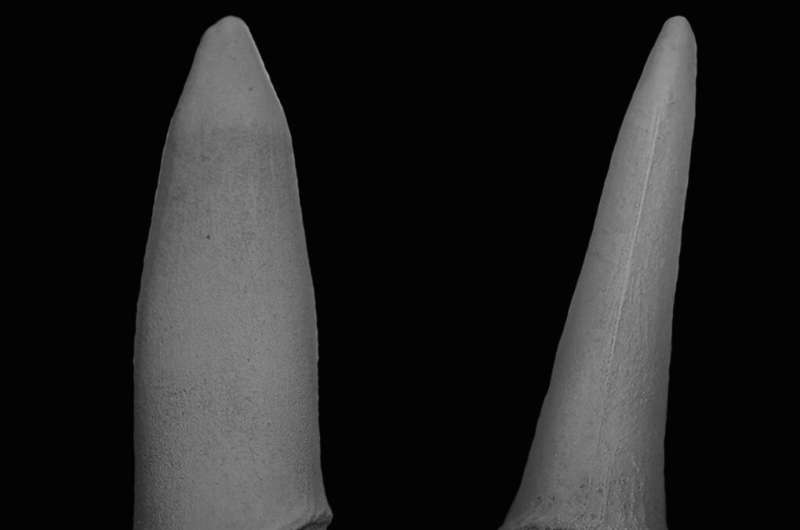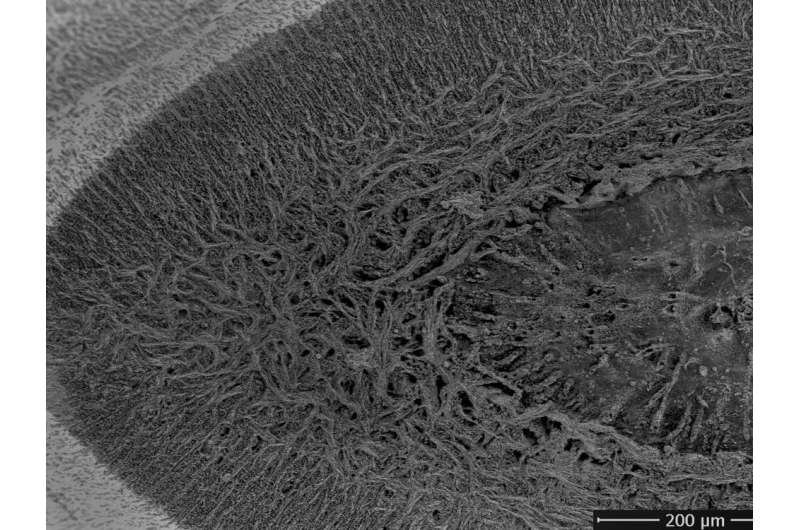
The origin of teeth has been a topic of debate for a long time. The "outside-in" hypothesis suggests that they evolved from body scales that migrated into their mouths. The "inside-out" hypothesis is that they evolved independently of scales, from deep within the mouth to the jaws. The "outside-in" hypothesis is supported by a new study.
Todd Cook, associate professor of biology, Penn State Behrend, said that the team didn't set out to contribute to the debate about the origin of teeth. He and his colleagues were studying the tissue structure of rostral denticles, which are the jagged spikes that run along the snout of sawsharks and sawfishes and are used in self-defense. The sawfishes are similar to skates and rays and are related to sharks, according to a study written by Cook.
A group of sawfishes that lived in North American waters around 100 to 65 million years ago were examined. The samples were found in New Jersey.
Cook said that rostral denticles are similar to scales on the body because of their location on the snout. The organization of the tissues that make up rostral denticles was unknown. We hypothesised that the rostral denticles would have the same structure as the body scales because they are specialized.

The researchers sectioned the samples longitudinally and longitudinally across the width. The histology of the rostral denticles was studied using a scanning electron microscope.
Cook said that the rostral denticle was more complex than the body scales. The organization of the teeth in this ancient sawfish was similar to that of modern shark teeth.
He noted that both Ischyrhiza mira rostral denticles and modern shark teeth have an enameloid covering that mostly consists of fluorapatite microcrystals. There are bundles that run parallel to the surface of the tooth. There is a region known as the "tangled bundled enameloid." The "radial bundled enameloid" is made up of packed microcrystals that are oriented to the tooth surface.
Cook said that shark teeth can resist the mechanical stresses associated with feeding if they have bundles of microcrystals arranged in different orientations. He noted that the bundled microcrystal arrangement of the Ischyrhiza mira's rostral denticles may have been a way to resist mechanical forces.
Cook said that the study made an important contribution to the debate about the origin of teeth. The "outside-in" hypothesis is supported by this finding, as it shows that scales have the ability to evolve a complex tooth-like enameloid outside of the mouths. Scales produced a similar bundled structure in teeth and rostral denticles than to conclude that both structures evolved a similar enameloid independently.
More information: Todd D. Cook et al, Complex enameloid microstructure of † Ischyrhiza mira rostral denticles, Journal of Anatomy (2022). DOI: 10.1111/joa.13676